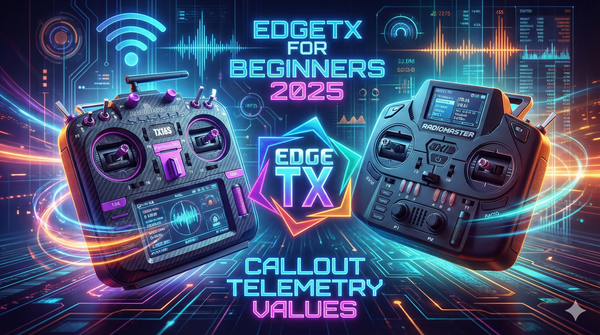FPV drone flying is an exciting and thrilling hobby that requires dedication, time, and effort to learn. However, many beginners make common mistakes that can lead to frustration, damage to equipment, and even safety hazards. In this article, we will discuss four common mistakes that FPV drone beginners should avoid to improve their skills and safety.

Not Practicing in a Simulator
One of the most common mistakes that FPV drone beginners make is not investing sufficient time in a good FPV drone simulator before attempting to fly a real drone. It's crucial to learn essential flying skills that can prevent costly mistakes and minimize frustration. Simulator software typically costs $10 to $20, making it a wise investment when compared to the potential damage of a real drone worth 20 times that amount. By practicing in a simulator, beginners can learn how to control their drone, navigate through obstacles, and perform maneuvers without risking damage to their drone. While you can also just use a standard gamepad/ Xbox controller at first, its a good idea to use a simulator compatible R/C controller such as the BetaFPV LiteRadio to help get you used to the stick feel of a FPV controller to start building your muscle memory.
Buying Second-Hand or Expensive Drones Initially
Another common mistake that beginners make is purchasing a second-hand drone as their first quadcopter. While it may seem cheaper and tempting, it's best to avoid this option. As a novice, you may not be able to identify existing issues with those quads, or have the necessary knowledge to fix them. It's wise to start with a brand-new, budget-friendly, and beginner-oriented drone to learn the fundamentals while minimizing the risk of costly crashes or damages. By doing so, beginners can gain confidence and experience before moving on to more advanced drones.
What's the best starter drone to buy?
When it comes to buying your first drone, its a good idea to start with a RTF decent whoop kit, as these are fairly affordable, and dont break as easily in a crash while you are learning to fly. A good option here is to make sure the whoop uses brushless motors, this ensures it will be powerfull enough to actually be fun to fly. The Cetus X RTF kit, or Emax Tinyhawk III are good options here. They are not the cheapest, but are the best value as theese quads have good enough performance to fly both indoors and outdoors. The equipment you get with them are also good and can be used on other drones in the future.
Buying Cheap or Outdated Radios
Investing in the best radio you can afford and seeking recommendations from experienced pilots is crucial for beginners. Buying cheap or unpopular radio models can be risky, as it can be challenging to find help when needed. Your radio will likely accompany you throughout your FPV career, and unlike your quad, it won't crash or get damaged as easily. It's important to invest in a reliable radio that can provide a stable connection and enhance your overall FPV experience. ExpressLRS or TBS Crossfire are regarded as one of the best options available in 2023.

Battery Management and Safety
Battery management and safety are crucial for beginners to ensure safer flying and prevent potential accidents. It's essential to monitor battery levels while flying and land your drone before the battery level becomes critically low to prevent potential crashes or damage to the battery.
While setting up your drone on the bench and connecting the battery, always remember to remove the propellers to prevent injuries and accidents that could occur if the motors were to unexpectedly spin up.
Additionally, it's crucial to never leave your batteries charging unattended and avoid skimping on chargers. Investing in a reliable charger and maintaining a watchful eye during the charging process can help prevent potential accidents.

FAQs:
- What is failsafe setup, and why is it important? Failsafe setup is the process of configuring your drone's failsafe settings, which are crucial for preventing flyaways and crashes in case of signal loss or low battery situations. Familiarizing yourself with how your drone will respond when it loses signal can help you stay in control and keep your flights safe.
- How can I learn about my country's drone regulations? Research and familiarize yourself with your country's drone regulations, including registration requirements, flight restrictions, and no-fly zones. If in doubt, join local FPV groups and ask people with experience. In the UK, the CAA has some nice guidance here
- Can I fly my drone in any open space? No, it's important to research and familiarize yourself with your country's drone regulations, including flight restrictions and no-fly zones. Flying in restricted areas can result in fines or legal consequences.
- What are the risks of over-discharging a battery? Over-discharging a battery can lead to potential crashes or damage to the battery. It's important to monitor battery levels while flying and land your drone before the battery level becomes critically low.
- Can I use any charger to charge my drone battery? No, it's crucial to invest in a reliable charger and avoid skimping on chargers. Using the wrong charger can lead to potential accidents and damage to the battery.
As a beginner, it's important to learn from setbacks and grow as you progress in your FPV journey. By avoiding common mistakes, you can enjoy the thrilling world of FPV drone racing while ensuring safety for yourself and those around you. Remember to research and familiarize yourself with your country's drone regulations, invest in the best equipment you can afford, and always prioritize safety.







